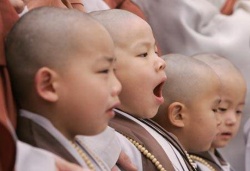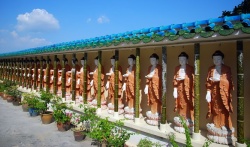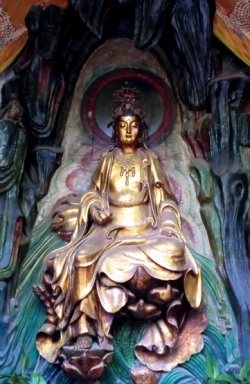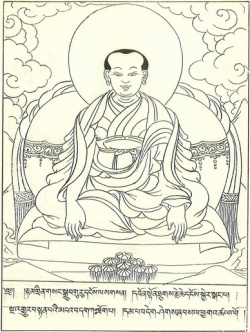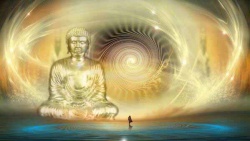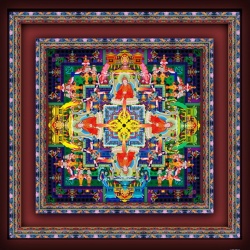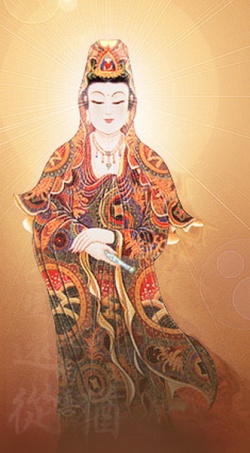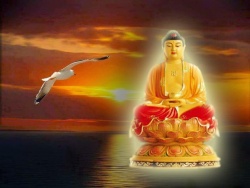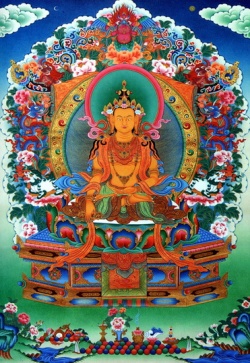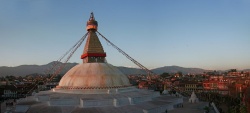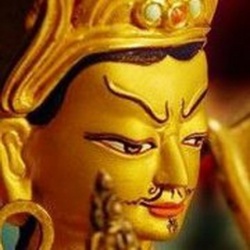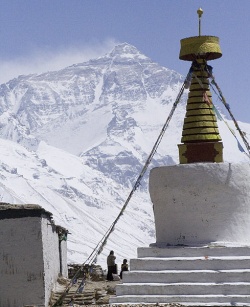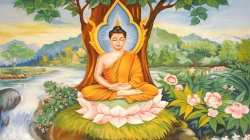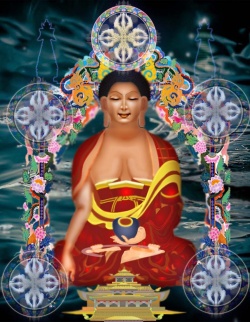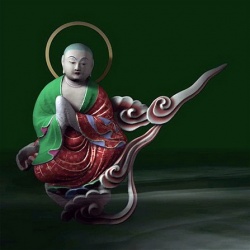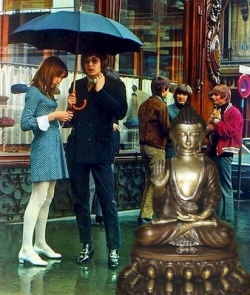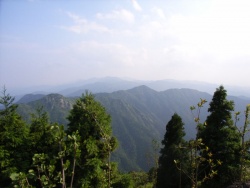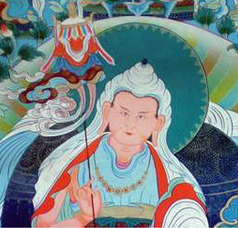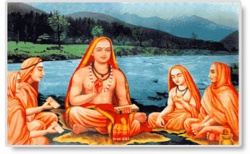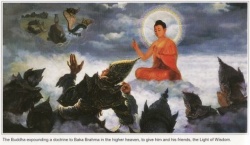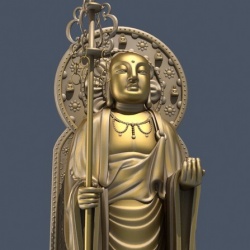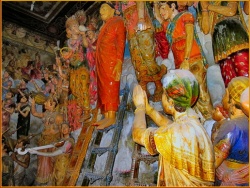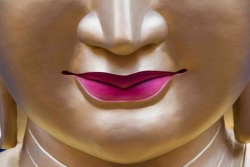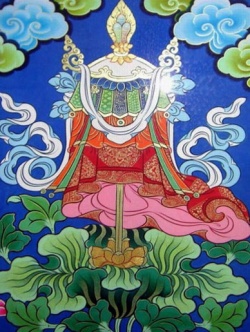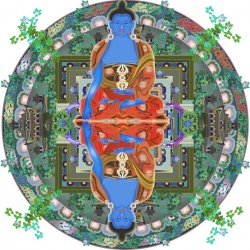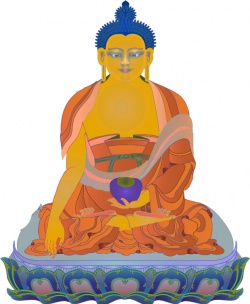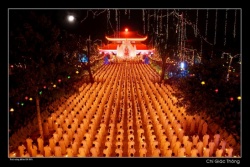Maha panchabhuta
The beginning course on the elements, the Five Elements Process™, purifies our body, charges our soul with the five elements and opens a connection to the cosmic energy.
That’s Part A. Part B, the Mahapanchabhutas Process™ is also for purification, but at an even deeper level.
It directly relates to your soul energy and your soul capacity. You learn to identify and handle the strong illusion channels around your soul and to wash them out. It is a big chapter on maya, illusion, karma, and negativity and how each of these are working on your soul and affecting your life.
The Mahapanchabhutas Process™ consists of two main sections.
The first section focuses on ‘blocks’. Blocks are all the negative emotions, thoughts and actions creating negative vibrations in your soul.
Until you can recognize your blocks, you are a victim of them.
They are the darkness covering your soul’s light and the most difficult channels to master.
You need to develop strong soul resistance and powerful protection circles to handle soul illusions. This section requires deep inner awareness, honesty, an open heart, courage and deep surrendering.
The process addresses these blocks and the master comes as your ‘good enemy’—intentionally creating the circumstances for your blocks to surface—to help you experience and identify them.
Just as in the beginning of the Five Elements Process it was necessary for you to heal yourself before you could heal others, so too, without washing your own blocks it is not possible for you to help others wash their karmas. It’s through the five elements that illusions and karmas are addressed.
The second section of the Mahapanchabhutas Process™ brings you to deeper, direct understanding of the subtle energy of each element. You move in the direction of commanding on the elements.
For example, once you can command on the inner energy of the water element you can wash 80% of the illusions. You can do beautiful miracles like regenerate a soul that has left the body.
Through this process you can help take care of the Creation in a beautiful way.
To really become a master, to become in one part a creator responsible for people’s karmas—purifying them, washing them, releasing them—and to be able to give divine experiences, you have to go through these inner five element’s channels.
Gaining this energy makes you eligible for the next beautiful step: preparing for darshan with Mother Divine.
The 5 great elements originate from pancha tanmatra. Tanmatra is a Sanskrit word meaning subtle essence.
These tanmatras incarnate to form the 5 great elements.
Each great element is a combination of all 5 tanmatras but shows predominance of one tanmatra.
The 5 tanmatras are:
These tanmatras are related to each sense organ.
In Ayurveda, it is said that components & functioning of the nature is similar to our body components and its functions.
Pancha Mahabhuta theory states that everything in the physical creation is composed of these 5 elements.
The very first element that comes to existence is akash (Ether).
It is most expansive and least concreate of all.
The next element derived is Vayu (Air) then comes Agni (Fire), then Jala (water element is formed and lastly Prithvi (earth element is formed.
Akash (Ether) :
When we say Ether, words like space or a vast openness comes to one's mind.
Akash means having a cavity with freedom to move. The tanmatra of ether element is Shabda (Sound).
Whenever there is compactness of molecules, we get a dull sound on tapping but when there is a cavity or hollow space, we get a resonant sound.
The qualities of ether element are clear, light, subtle, and immeasurable.
Ether element is related with various actions like expansion, vibration, non-resistance. Sensory organ related to ether element is ear as it is hollow and transmits the sound waves.
Vayu (Air):
Air is the great element that shows a sense of movement. Vayu or air initiates & directs motion or movement.
Air element keeps the body in constant motion.
The tanmatra of Air element is Sparsha (Touch).
The sensory organ related to Air element is skin. Skin is very sensitive for detecting any movement, change in pressure or vibration in subtle form. Any movement against skin can be easily registered.
Air element is mobile, dry, light, cold and subtle in nature. Its main action is to do any kind of movement.
Tej (Fire):
The previous element, Air performs different movements; whenever there is movement, it produces friction and leads to formation of heat or fire. This element is also called as teja or agni.
All various forms of transformation including digestion of food are carried out by fire element.
The tanmatra of fire element is Rupa (Vision).
Perception of light is carries out by this tanmatra. Fire element is hot, sharp, light, dry and subtle.
Various functions carried out by this element are penetration, digestion of food, and transformation of thoughts, intelligence and perception of light.
Jala (Water):
The fourth element is water.
It is also called as jala or Apa.
Whenever we think of water qualities like liquidity or fluidity comes to our mind.
Water shows important quality of binding - e.g. if we see dry soil, we cannot make a ball out of it.
But if we add water to the soil, then we can easily make mud balls.
This binding nature helps in forming different structures in the body as it binds the 2 cells together.
Hence this element is a constructive force.
The tanmatra of water element is rasa (taste).
The sense of taste or the ability to taste depends on the liquidity that exists within in the mouth in the form of saliva.
Dry mouth along with dry tongue is unable to give sense of taste.
The water element exhibits qualities like cool, liquid, dull soft, and sliminess.
Its main actions are cohesiveness and adhesiveness.
Prithvi (Earth):
This is the last element.
It is solid, dense, gross and very hard.
It is related to all solid and hard structures that show shape - e.g. bones, muscles, teeth and nails.
The Earth element is responsible for giving structure, shape and strength to the body.
The tanmatra for Earth element is Gandha (Smell).
The small particles of earth are scattered all over the palce gives us the sense of smell.
The sensory organ related is nose. Nose is more hard compared to other sensory organs.
Qualities of earth element are heavy, dull, dense hard and gross.
If everything is consciousness (Brahman), then how does this conscious energy put on the appearance of material solidity.
Why does the table appear solid?
In order to bridge the gulf between consciousness and apparently durable matter, ancient Indian sages postulated (or “divined”) that all physical things are constituted of five subtle elements called Pancha-Mahabhutas – earth, fire, water, air, ether.
These are not the elements known in the conventional sense (e.g. “water” does not imply the water, and “earth” does not mean soil) but are actually subtle conditions which together create the perception of forms which can be sensed by the human mind.
The actual names of these five elements are Akasha (ether), Vayu (aeriality), Agni (fire), Apas (liquidity) and Prithvi (compaction).
The descriptions of these five constituents are quite similar across Sankhya, Tantra and Buddhist philosophy and even Greek Stoic texts.
Furthermore, as I point out later in this article, what is amusing is that these five elements were codified, probably inadvertently, in the Vishnu iconography seen in Indian temples!
It is profitable (profiter as the French say) to compare a variety of interpretations to discover the underlying meaning.
The principal sources that we rely on are [[Sri [Aurobindo’s]] interpretation based on Sankhya,
Arthur Avalon’s interpretation based on Tantra, J.C. Chatterji’s presentation of Kashmir Shaivism,
the Buddhist presentation as given in the Vasubandhu’s Abhidharmakosa, as well as extant Greek Stoic texts. As we see, there is remarkable convergence in all these interpretations.
Sankhya perspective as given by Sri Aurobindo
The following text is culled from a few sources (1, 2, 3, 4) in which Sri Aurobindo expounded his interpretation of the five elements:
Ether or Akasha: The elementary state of material Force is, in the view of the old Indian physicists, a condition of pure material extension in Space of which the peculiar property is vibration typified to us by the phenomenon of sound.
Air or Vayu: Vibration in the state of ether is not sufficient to create forms.
There must first be some obstruction in the flow of the Force ocean, some contraction and expansion, some interplay of vibrations, some impinging of force upon force so as to create a beginning of fixed relations and mutual effects.
Material Force modifying its first ethereal status assumes a second, called in the old language the aerial, of which the special property is contact between force and force, contact that is the basis of all material relations.
Furthermore, he said that it is this principle, Vayu, which is the support of all contact and exchange, the cause of gravitation and of the fields (magnetic and electric).
Fire or Agni: Ether and Air do not beget real forms but only varying forces.
A sustaining principle is needed.
This is provided by a third self-modification of the primitive Force of which the principle of light, electricity, fire and heat is for us the characteristic manifestation.
Fire is threefold: ordinary fire (Jala Agni), electric fire (Vaidyuta Agni), {solar fire (Saura Agni).
Liquidity or Apas:
Even with the above three, we can have forms of force preserving their own character and peculiar action, but not stable forms of Matter.
A fourth state characterised by diffusion and a first medium of permanent attractions and repulsions, termed picturesquely water or the liquid state.
Earth or Prithvi:
There is then a fifth state which is needed for cohesion, termed earth or the solid state, and this completes the necessary elements.
All forms of Matter of which we are aware, all physical things even to the most subtle, are built up by the combination of these five elements.
Upon them also depends all our sensible experience; for by reception of vibration comes the sense of sound; by contact of things in a world of vibrations of Force the sense of touch;
by the action of light in the forms hatched, outlined, sustained by the force of light and fire and heat the sense of sight; by the fourth element the sense of taste; by the fifth the sense of smell.
All is essentially response to vibratory contacts between force and force. In this way the ancient thinkers bridged the gulf between pure Force and its final modifications and satisfied the difficulty which prevents the ordinary human mind from understanding how all these forms which are to his senses so real,
solid and durable can be in truth only temporary phenomena and a thing like pure energy,
to the senses non-existent, intangible and almost incredible, can be the one permanent cosmic reality.
In a conversation with Pavitra, a French disciple, Sri Aurobindo expatiated that “these elements constitute only the grossest part of the physical plane. Immediately behind it is the physical-vital, the principle of life that is latent in matter.
J. C. Bose is contacting this element in his experiment (here, he is alluding to the Bose’s experiments on metal fatigue.
For more, see Bose and electrical response in metals) Beyond that layer lies the mind of matter.
This mind has a far different form than the human mind, still it is a manifestation of the same principle of organisation.
And deep below there are two more hidden layers… That is the occult knowledge concerning the physical plane only” (3).
Kashmir Shaivism
Kashmir Shaivism was founded by Abhinavagupta in the 8th century C.E.
To learn more on the general philosophy, see wikipedia page on Kashmir Shaivism.
Here, we will focus solely on its exposition of the five elements as provided in J.C. Chatterji’s book “Kashmir Shaivism” (5). What follows is a brief summary from that book.
There are five factors that constitute what may be termed the “materiality of the sensible universe”:
1. The principle of Vacuity (Avakasha), technically “Akasha” and literally the Sky, the bright shining Firmament.
This is nothing but “Dishah” or directions – the lines of Force radiating everywhere.
These lines are symbolized as the “hairs” of Shiva who is therefore called Vyomakesha (he whose hairs are made of Vyoman – Vyoman is a name for both space and direction).
It is these lines of Force which uphold all things in the Universe in their various positional relations.
The simile of all Space, and indeed the whole universe, being thus woven like a cloth is encountered several times in the Veda.
2. The principle of Aeriality, technically “Vayu”, and literally Air or the aerial atmosphere.
Vayu is required in order to create variation in the uniform and homogenous “temperature” created by Akasha (Ether).
3. The principle of what may be called Formativity. i.e. the Formative or Form building principle, technically “Agni” and literally Fire. In the varied play, some power is needed which produces, transforms and destroys forms.
This burning and flaring up into various shapes and forms is called Agni or Fire.
4. The principle of Liquidity, technically “api”, and literally Water.
5. The principle of Solidity or Stability, technically called the Prithivi or Dharanitattva , literally Earth.
Tantra perspective
The British orientalist Sir John Woodroffe (Arthur Avalon) elucidated the Tantra perspective on the five elements in his book “Serpent Power” (6). The following passage is excerpted from the book:
“…there are certain motions or forces (five in number) which produce solid matter, and which are ultimately reducible to ether (Akasa)…Akasa is one of the gross forces into which the Primordial Power (Prakrti Sakti) differentiates itself.
Objectively considered it is a vibration in and of the substance of Prakriti of which it is a transformation in which the other forces are observed to be operating….
At the back of both “matter” and mind, there is the creative energy (Sakti) of the Supreme who is the cause of the universe and Consciousness itself.
Matter affects the Jiva (soul) in five different ways, giving rise in him to the sensations of smell, taste, sight, touch and feel, and hearing….
From the Sabda-Tanmatra and from the combinations of the latter with the other Tanmatras are produced the gross Bhutas (Mahabhuta), which as things of physical magnitude perceivable by the senses approach the Western definition of discrete sensible “matter”.
These five Mahabhutas are:
Akasa (Ether),
Vayu (Air),
Tejas (Fire),
Apas (Water) and
Prithvi (Earth).
Their development takes place from the Tanmatra, from one unit of that which is known in sensible matter as mass (Tamas), charged with energy (Rajas) by the gradual accretion of mass and redistribution of energy.
The result of this is that each Bhuta is more gross than that which precedes it until “Earth” is reached.
These five bhutas have no connection with the English “elements” so called, nor, indeed, are they elements at all, being derived from the Tanmatras.
Dynamically and objectively considered they are (proceeding from Akasa) said to be five forms of motion, into which Prakriti differentiates itself:
Akasha: non-obstructive, all-directed motion radiating lines of force in all directions, symbolized as the “Hairs of Siva” affording the space in which the other forces operate;
Vayu: transverse motion and locomotion in space.
Agni: upward motion giving rise to expansion.
Apas: downward motion giving rise to contraction.
Prithvi: that motion which produces cohesion, its characteristic of obstruction being the opposite of the non-obstructive ether in which it exists and from which it and the other Tattvas spring.
…These Bhutas (elements) when compounded make up the material universe.…
Matter, thus exists in the five states etheric, aerial, fiery, fluid, and solid.
Prithvi does not denote merely what is popularly called “Earth”.
All solid (Parthiva) odorous substance is in the Prithvi (earth) state.
All substance in the fluid (Apya) state is in the Apas(liquid) state, as everything which has cohesive resistance is in that of Prithvi.
This latter, therefore, is the cohesive vibration, the cause of solidity, of which the common earth is a gross compounded form.
All matter in the aerial (Vayava) condition is in the Vayu state.
These are all primary differentiations of cosmic matter into a universe of subtly fine motion.”
Avalon further adds that “according to Western notions, it is the air which is the cause of sound.
According to Indian notions, Ether is the substratum (Asraya) of sound, and Air (Vayu) is a helper (Sahakari) in its manifestation.” (6)
Buddhist perspective presented by Vasubandhu
Vasubandhu (4th C.E) was a prominent Buddhist philosopher.
The Buddhist interpretation of the elements is taken from his book Abhidharmakosa.
Yasomitra wrote a commentary called Sphutartha Abhidharmakosa-vyakhya on the Abhidharmakosa.
Among the recent books expounding on this scripture are Sukomal Chaudhuri’s Analytical Study of Abhidharmakosa and Louis De La Vallee Poussin’s Abhidharmakoshabhasyam.
The four elements are discussed in verses 11-13 of Chapter 1 called “Dhatunirdesa” in the Abhidharmakosa.
It is noteworthy that the elements are referred to as Forces rather than Matter.
Also note that unlike the other systems, Vasubandhu discusses only four rather than five elements. He states:
Earth provides Supporting Force
Water provides Cohesion Force
Fire provides Ripening Force
Air provides Expanding Force
Chaudhuri presents Yasomitra’s commentary in his book:
“Yasomitra explains how these great elements are interdependent.
If we analyse any one of these elements, say earth, we will observe that together with the atoms of earth it contains at least one atom, if not more, of water, fire and air.
But as the atoms of earth predominate here, we call it earth.
Thus, though the great elements (Mahabhutas) arise together, in all molecules, hard, moist, hot or mobile, for the time being the nature of one predominates and our senses notice only the predominating one and not the others.
We, therefore, say: this is earth; this is water; this is fire; this is air. So each and every material object is the combination of the four great elements.
Even the derivative material dharmas (laws) of the Rupaskandha (matter aggregate) are nursed by the four great elements as an infant prince is fed, bathed, dressed and fanned by others. (7)
Greek Stoic philosophy
The Stoic school of philosophy in Greece was started by Zeno under a porch (i.e. Stoa).
There are several noteworthy similarities between the Indian philosophies and the Stoic philosophy, as pointed out by McEvilley in his book (8).
The couple of passages below from extant Stoic scriptures pertain to the five elements:
God, Intelligence, Fate, and Zeus are all one, and many other names are applied to him.
In the beginning, all by himself, he turned the entire substance through air into water.
Just as the sperm is enveloped in the seminal fluid, so god, who is the seminal principle of the world, stays behind as such in the moisture, making matter serviceable to himself for the successive stages of creation.
He then creates first of all the Four Elements:
fire,
water,
air,
earth.
(Diogenes Laertius 7.135-6)
The world, they hold, comes into being when its substance has first been converted from fire through air into moisture, and then the coarser part of the moisture has condensed as earth, while that whose particles are fine has been turned into air, and this process of rarefaction goes on increasing till it generates fire.
Thereupon out of these elements animals and plants and all other natural kinds are formed by their mixture (Diogenes Laertius 7.142)
Although the ordering of the elements is a little different, the process resembles the other systems that we have seen above: there is a modification of the primordial substance with fire converting into air, then water and finally into earth.
Vishnu iconography
Now we will examine what seems to be a rather curious and amusing link between these elements and Vishnu iconography which is used in Vaishnava temples !
In the Vaishnavite tradition of Hinduism, Vishnu is supposed to be the Supreme and he is said to have had four expansions (Chatur-Vyuha) :
Vasudeva,
Sankarsana,
Pradyumna,
Aniruddha,
as per the Kurma Purana,
Agni Purana (48.13) and
Vishnu Purana (V.18.58) (9).
The Garuda Purana goes a step further and refers to the five forms of Vishnu (Pancha-tatvarchana) – Vasudeva, Sankarsana, Pradyumna, Aniruddha and Narayana (9).
In a conversation recorded in 1910, Sri Aurobindo spoke of the “divine principle, enmeshed in a quadruple sheath of Vasudeva, Sankarshan, Pradyumna and Aniruddha” (10).
The Shanti Parva of the Mahabharata alludes to this transformation as well:
… When He (Vishnu) becomes Jiva, He comes to be called Sankarshana.
Next, He transforms Himself into Pradyumna and then into Aniruddha.
In this way, the high-souled Krishna, who has Himself for His origin divides (or displays) Himself in fourfold form. Desirous of creating this universe which consists of the fivefold primal elements. (11)
These names seem to have been chosen with care, because their Sanskrit meanings indicate a connection to the five elements discussed above:
Vasudeva is “that in which all things abide”, indicating the element Ether.
Sankarsana indicates “squeezing together.” Samyak (complete) + ppAkarshan[[ (attraction)], indicating the element of Aeriality.
Pradyumna means the “radiant one”, indicating the element Fire.
Aniruddha in Sanskrit means “without obstacles”, indicating liquidity or Water.
Narayana: In Sanskrit, another name for water is Nara so Narayana means “one who floats on Water”, which is the previous element. Hence, Narayana probably indicates Earth.
Thus these expansions of Vishnu seem to have a correspondence with the five elements.
The chatur-vyuha (four expansions) of Vishnu was later reified and became the basis for Vishnu iconography.
Based on these expansions, the Pancharatra theology within Vaisnavism developed four-headed idols of Vishnu (called Chatumurti-Vishnu) which came to be worshipped in temples. You can see some of the idols at the links given below.
This is an outstanding example of how cosmological insights of sages were transformed into external forms of worship suitable for the masses !!
Four-headed Vishnu at the Huntingon Archive:
Vishnu Caturmurti at the Los Angeles County Museum of Art
Conclusion
It is not clear whether these five elements have any correspondence with modern-day physics.
However, it is worth noting that in the first section above, Sri Aurobindo said that Vayu is the “support of all contact and exchange, the cause of gravitation and of the fields (magnetic and electric)”.
This concept bears close resemblance to the four forces – strong nuclear, weak nuclear, electromagnetic and gravity – that modern physics seeks to integrate into a unified theory.
In 1989, John Hagelin, a particle physicist and Director at the Maharishi University of Management, claimed that there is a striking correspondence between these five tanmatras and the five quantum-mechanical spin types of a unified quantum field theory (12).
He proposed the following parallels:
between the akasha or “space” and the gravitational field;
between the vayu or “air” tanmatra, which stands as a link between space and the other tanmatras, and the gravitino field;
between the tejas or “fire” tanmatra, responsible for chemical transformations and the sense of sight, and the spin-1 force fields;
and between the apas and prithivi (“water” and “earth”) tanmatras and the spin-1/2 and spin-0 matter fields, respectively
Well, this is an open question and we leave it on that note.
References
Sri Aurobindo. Essays on the Gita, CWSA vol. 21, p 72
Sri Aurobindo. Life Divine, CWSA vol. 21, p 88.
Talk between Sri Aurobindo and Pavitra dated 8 May 1926. It first appeared in the Sri Aurobindo Circle Number 8, 1952, pp. 99-102.
Sri Aurobindo. Isha Upanishad, CWSA vol. 17, pp. 247-250.
J.C Chatterji. Kashmir Shaivism, Albany: SUNY Press, 1986, pp 8, 91-101, 119
Arthur Avalon. Serpent Power, New York: Dover, 1974, pp 68-71
Sukomal Chaudhuri. Analytical study of the Abhidharmakosa, Calcutta, Sanskrit College, 1976, p 77
Thomas McEvilley. The Shape of Ancient Thought, New York, Allworth Press 2002.
N.P. Joshi. Iconography of Balarama, pp 10-12 (google books)
Documents in the Life of Sri Aurobindo, In Chandernagore, http://www.sriaurobindoashram.org/research/show.php?set=doclife&id=22
Mahabharata. Shanti Parva. http://www.sacred-texts.com/hin/m13/m13b123.htm
John Hagelin. Restructuring physics from its foundation in light of ppMaharishi’s[[ Vedic Science, Modern Science and Vedic Science 3, 1989, pp 3-72 http://www.mum.edu/pdf_msvs/v03/hagelin.pdf
Source
https://auromere.wordpress.com/2011/05/19/pancha-mahabhutas-the-five-subtle-constituents-of-matter/

